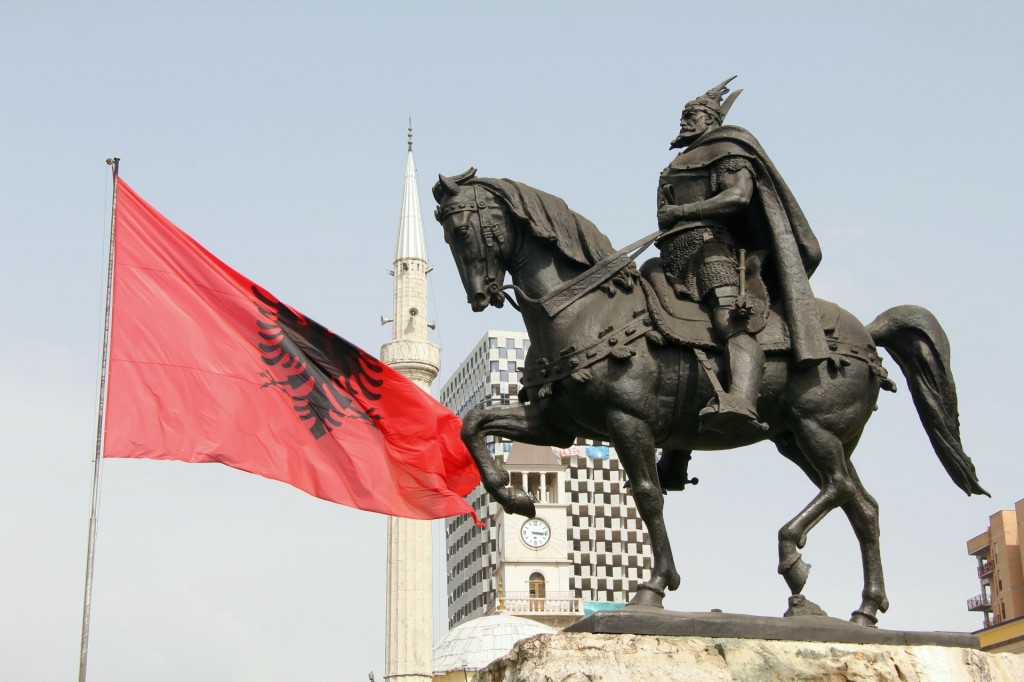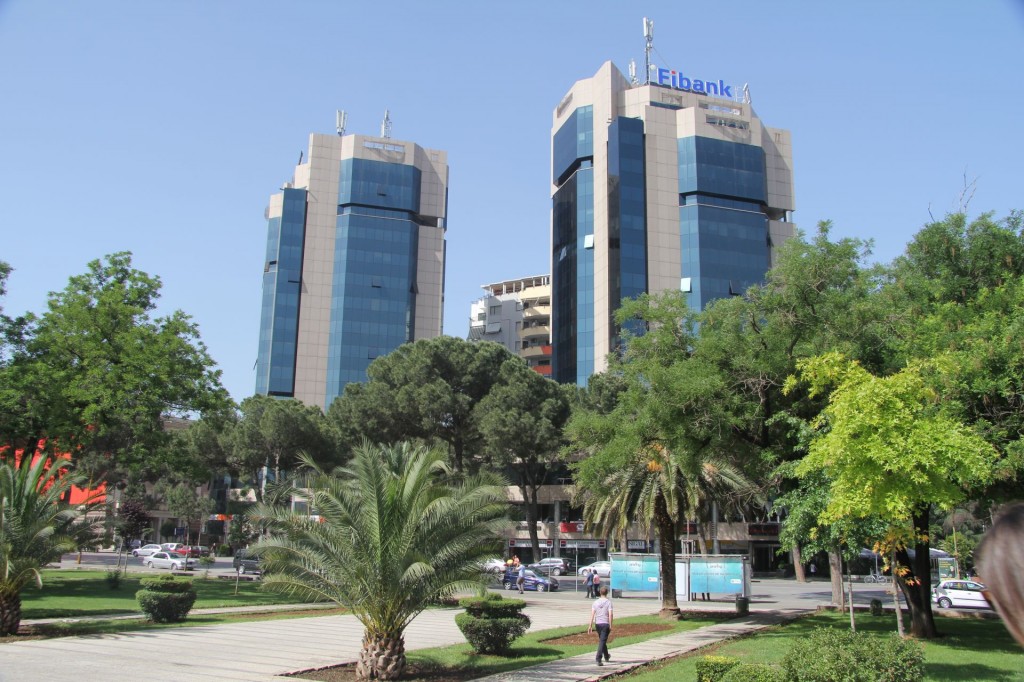 The first impression you get when entering Tirana, the capital of Albania, is the absolutely chaotic traffic. Cars, bicycles, pedestrians, lorries and donkey-cards are approaching you from all directions, using their horns at all times. There are hardly any signposts and drivers do not respect any traffic rules on the numerous roundabouts (probably most of them do not KNOW such rules!).
The first impression you get when entering Tirana, the capital of Albania, is the absolutely chaotic traffic. Cars, bicycles, pedestrians, lorries and donkey-cards are approaching you from all directions, using their horns at all times. There are hardly any signposts and drivers do not respect any traffic rules on the numerous roundabouts (probably most of them do not KNOW such rules!).
Anyhow, during our last visit to Albania we did succeed in reaching the center and I must say: it was worth the effort! Rapidly growing Tirana, home to ¼ of Albania’s population, is a city of contrasts, where modern lifestyle meets old traditions, where rich and poor people brotherly live together and huge new glass towers exist next to dilapidated prefab apartment buildings.
First of all, we visited Tirana’s main square and its immediate surroundings. A prominent position on Skanderbeg Square is taken by the statue of the Albanian national hero Skanderbeg – built in 1968 – and an enormous Albanian flag.
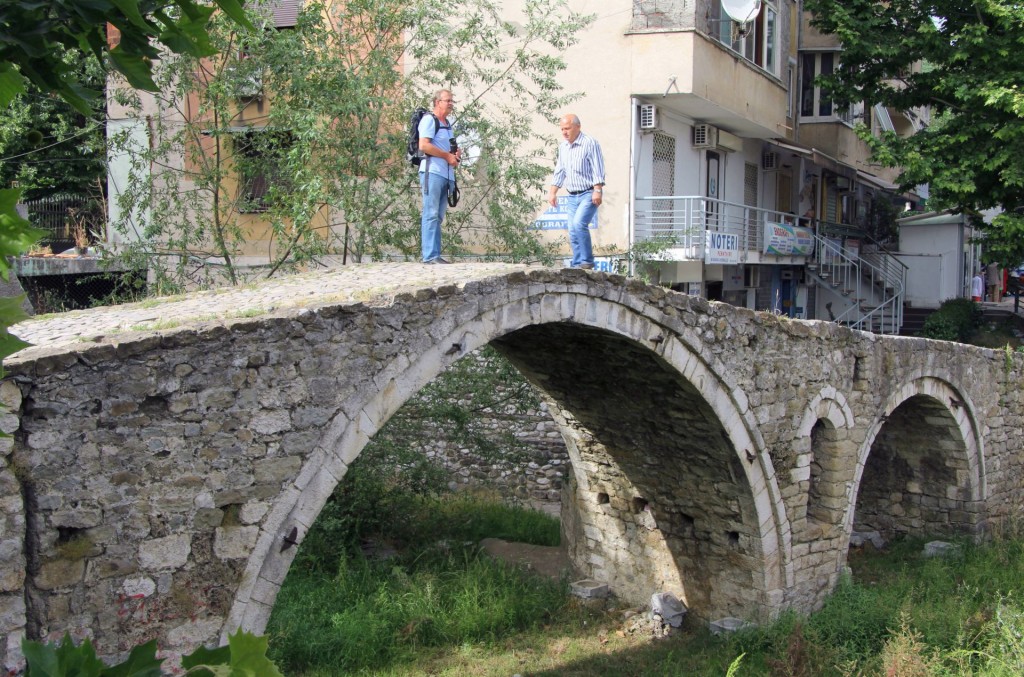 Around the square we saw the Palace of Culture, the Clock Tower and Et’hem Bey Mosque, which was built in the beginning of the 19th century by Ethem Pasha. We visited the mosque and admired the original paintings of trees, waterfalls and bridges. A very important building on the same square is also the National History Museum with its gigantic mosaic „The Albanians“.
Around the square we saw the Palace of Culture, the Clock Tower and Et’hem Bey Mosque, which was built in the beginning of the 19th century by Ethem Pasha. We visited the mosque and admired the original paintings of trees, waterfalls and bridges. A very important building on the same square is also the National History Museum with its gigantic mosaic „The Albanians“.
As a matter of fact, we established that the center of Tirana with its tourist attractions is quite small. Close to the square are several governmental buildings in pastel colors that were built by the Italians in the Fascist era. Nearby is a nice walking path that leads you along various interesting historical buildings to the bridge of Tabakëve, an Ottoman stone footbridge from the nineteenth century.
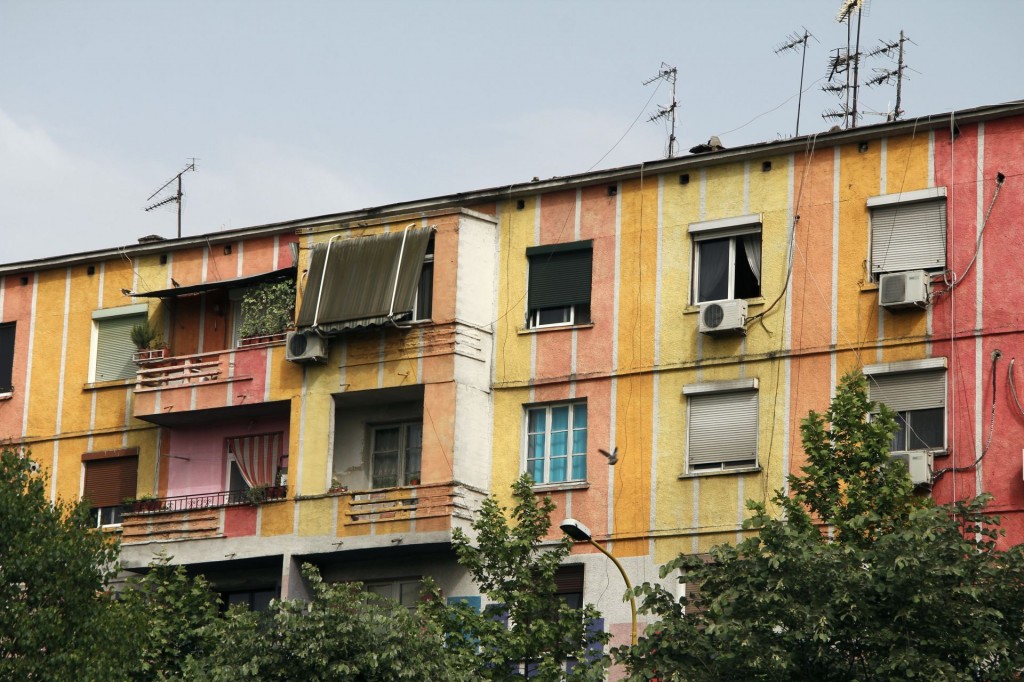 We also visited the Pyramid, located at a five-minutes walk from Skanderbeg Square. It was designed by Enver Hoxha’s daughter as a memorial center and museum for her father in 1988 and was considered to be the most expensive building built in Tirana at that time. Today it is totally dilapidated and stripped, the windows are broken and the walls are full of graffitis. Children were sitting and playing on the concrete walls and the whole environment gave us a very strange feeling of times that have definitely passed by. On the contrary, opposite to the Pyramid we saw the future: Tirana’s „Twin Towers“, luxurious 15-story buildings in blue and grey.
We also visited the Pyramid, located at a five-minutes walk from Skanderbeg Square. It was designed by Enver Hoxha’s daughter as a memorial center and museum for her father in 1988 and was considered to be the most expensive building built in Tirana at that time. Today it is totally dilapidated and stripped, the windows are broken and the walls are full of graffitis. Children were sitting and playing on the concrete walls and the whole environment gave us a very strange feeling of times that have definitely passed by. On the contrary, opposite to the Pyramid we saw the future: Tirana’s „Twin Towers“, luxurious 15-story buildings in blue and grey.
Close to the Twin Towers is the „Bllok“. During communist times, this area was reserved for government officials and embassies; common people were not allowed to enter here.
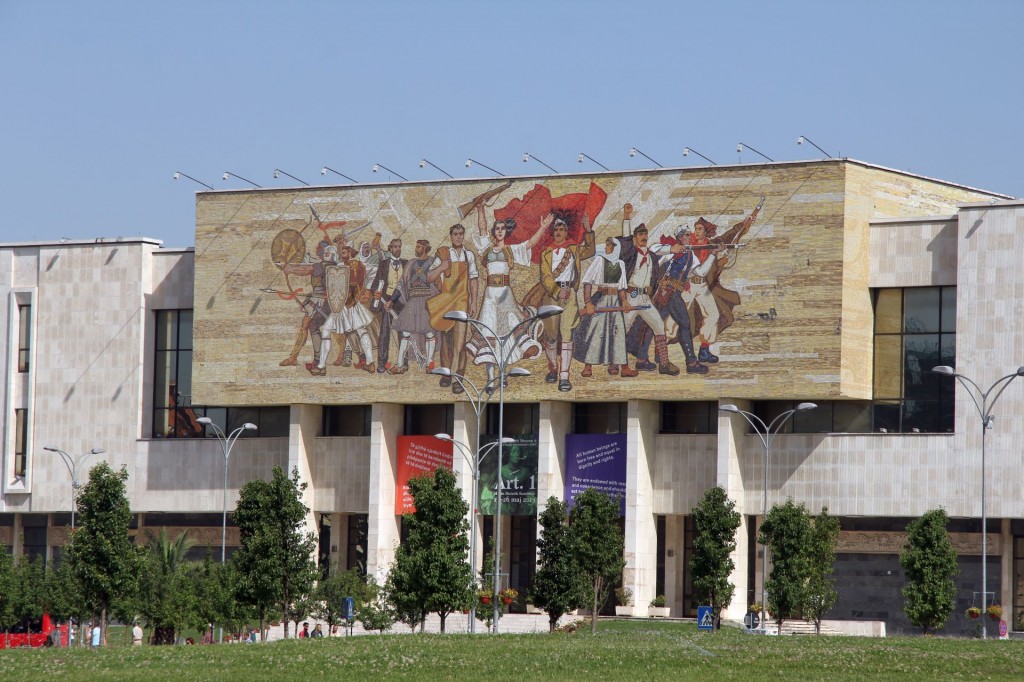 It was opened to the public in 1991 and since then you can find here the best cafes, shops and restaurants of Tirana.
It was opened to the public in 1991 and since then you can find here the best cafes, shops and restaurants of Tirana.
We walked through the area in the afternoon and had a drink on one of the trendy terraces. Expensive cars were cruising around and we admired the parade of elegant and well-dressed young people passing by. I had the feeling as if we were in Rome or Paris!
In particular the outskirts of Albania offer a sharp contrast to the „Bllok“. Many old buildings try to survive and their tenants make the best of it: they replace the old windows, protect the balconies with glass panes and put new sun shields. Fortunately, the majority of the apartment buildings are painted in bright colors. This was an idea of Edi Rama, Tirana’s mayor, who was also a trained artist. Thus, in spite of the old communist architecture, Tirana is an attractive and colorful city!

